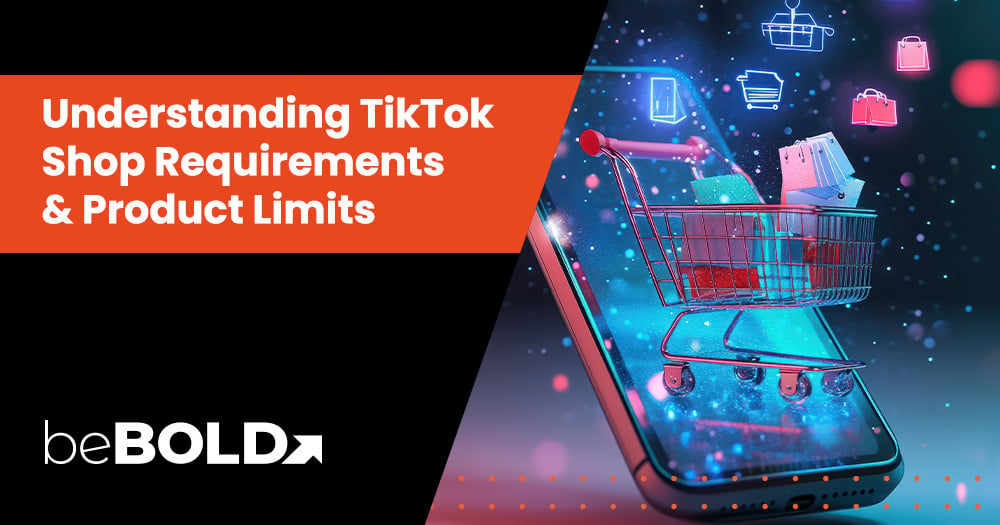The Amazon ecosystem continues to teem with opportunities and complexities like never before. The marketplace has grown even more in 2024, presenting a dynamic arena for many sellers worldwide. In addition, this eCommerce powerhouse is just as diverse as the products on the platform. It hosts an extensive range of products, from everyday essentials to niche specialties.
This diversity mirrors the vast spectrum of sellers in the platform and shows the potential that sellers can explore and capitalize on. However, sellers must be innovative and adaptable to the evolving consumer needs and Amazon trends. Success hinges on leveraging emerging industry forecasts within this digital landscape.
Luckily, this article offers insights and strategies for learning the ropes of the Amazon marketplace. From anticipated advancements in AI-driven customer experiences to Amazon statistics, these will equip you with the knowledge to thrive amidst the competitive landscape.
This diversity mirrors the vast spectrum of sellers in the platform and shows the potential that sellers can explore and capitalize on. However, sellers must be innovative and adaptable to the evolving consumer needs and Amazon trends. Success hinges on leveraging emerging industry forecasts within this digital landscape.
Luckily, this article offers insights and strategies for learning the ropes of the Amazon marketplace. From anticipated advancements in AI-driven customer experiences to Amazon statistics, these will equip you with the knowledge to thrive amidst the competitive landscape.
Key Amazon Marketplace Statistics

Numbers and trends say a lot about Amazon's opportunities, including possible setbacks. These insights offer invaluable glimpses into the platform's dynamics, providing current and future sellers with a crucial understanding of navigating this bustling digital marketplace.
1. "Home and Kitchen" is the #1 product category for Amazon SMB sellers in 2024. (Source: RevenueGeeks)
The “Home and Kitchen” category remains the top-selling product area for small and medium-sized businesses (SMBs) on Amazon in 2024. With increasing demand for home essentials, kitchen gadgets, and décor, sellers can tap into a thriving market by strategically positioning products in this high-performing category.
2. More than 60% of sales during Amazon's 2024 Black Friday Week and Cyber Monday came from independent sellers. (Source: Amazon)
The significant share of sales from independent sellers during major shopping events like Black Friday and Cyber Monday highlights the growing influence of SMBs on Amazon. These events provide a unique opportunity for sellers to boost visibility and capture a larger share of consumer spending. Optimizing listings and offering competitive pricing during these high-traffic periods is key to success.
3. Amazon predicts Fashion & Apparel to be its fastest-growing product category between 2022 and 2027. Sales will likely increase at a CAGR of 12.4%. Health & Beauty follows with a forecasted CAGR of 12.1%, then Products and Electricals with 11.6%. (Source: Statista)
Understanding and adapting to customer needs is critical for success. This forecast sheds light on such evolving preferences within the Amazon marketplace. Sellers can use this insight to align their product offerings with the anticipated growth areas and capture a larger market share. It can also drive sales and expand the customer base, reaping significant rewards.
Whether introducing new product lines, enhancing existing offerings, or refining marketing strategies, sellers can leverage this trend to stay relevant in the retail landscape.
4. Amazon FBA sellers save about 70% per item shipped compared to major US carriers. (Source: RevenueGeeks)
Leveraging Amazon's Fulfillment by Amazon (FBA) service allows sellers to streamline their logistics operations and reduce shipping costs. It also provides customers with fast and reliable order fulfillment, which enhances their experience. Moreover, this fulfillment solution enables sellers to focus on growing their business without being burdened by logistical challenges.
Other Historical Statistics
Here are some insightful statistics from previous years that highlight the opportunities and advantages of selling on Amazon. These figures showcase how the platform continues to grow and evolve, offering immense potential for sellers to thrive. Understanding these trends can help you make informed decisions and maximize your success.
1. In 2022, brands experienced at least a 20% sales growth compared to the previous year. (Source: Amazon)
This statistic underscores the immense potential for sales growth within the Amazon Marketplace. It signals a green light for sellers to make the most of the platform's solid ecosystem and expanding customer base. Moreover, it reflects the current trend of consumers increasingly purchasing on Amazon. Thus, sellers must establish and strengthen their presence on the platform.
2. In 2022, sellers and advertisers who used Amazon Ads' Sponsored Products campaigns spent 13%-79% less per click than alternatives. (Source: Amazon)
This statistic highlights how lucrative Amazon Ads are for sellers seeking to enhance their visibility and reach within the platform. Sellers can strategically target their advertisements using Sponsored Products campaigns to attract qualified leads and generate conversions.
Additionally, the lower cost per click compared to alternative advertising channels means sellers can achieve a greater return on investment (ROI) for their advertising spend. This cost-effectiveness is particularly significant in an environment where advertising costs can quickly escalate, making it challenging for sellers to maintain a competitive edge.
3. Amazon continues to be the top eCommerce destination in the United States. In April 2023, Amazon recorded a staggering 2.2 billion total web visits globally. (Source: Statista)
Amazon's unparalleled dominance in eCommerce is undeniable since it's the go-to platform for millions of shoppers worldwide. For sellers, it underscores the immense exposure and potential customer reach offered by the Amazon marketplace.
It also emphasizes the need for sellers to optimize their listings, enhance their brand presence, and leverage Amazon's tools and resources to compete and succeed in this fierce environment.
4. Amazon FBA sellers save about 70% per item shipped compared to major US carriers. (Source: RevenueGeeks)
Leveraging Amazon's Fulfillment by Amazon (FBA) service allows sellers to streamline their logistics operations and reduce shipping costs. It also provides customers with fast and reliable order fulfillment, which enhances their experience. Moreover, this fulfillment solution enables sellers to focus on growing their business without being burdened by logistical challenges.
Top 5 Current Trending Products on Amazon
Here are some of the current trending items on Amazon that are gaining popularity in 2025. These products cater to diverse needs and are making waves in their respective categories:
1. Blackstone 4114 Griddle Seasoning and Cast Iron Conditioner (6.5 Ounce)
.png?width=602&height=321&name=Blackstone%204114%20Griddle%20Seasoning%20and%20Cast%20Iron%20Conditioner%20(6.5%20Ounce).png)
For grilling enthusiasts and outdoor chefs, the Blackstone Griddle Seasoning is a must-have. This premium blend of oils and natural ingredients is designed to protect and season your griddle, ensuring long-lasting performance and flavor.
It helps maintain your cast iron griddle’s non-stick surface and prevents rust, making it a trending choice for BBQ lovers and camping enthusiasts.
2. Muddy Mat® Super Absorbent Microfiber Dog Door Mat

Pet owners are raving about the Muddy Mat®, a super absorbent microfiber mat designed to keep muddy paws off your floors. This non-slip, washable pet rug dries quickly, making it perfect for rainy or snowy days when pets track dirt inside.
It’s a practical solution for pet owners looking to maintain a clean home while keeping their furry friends comfortable.
3. Callaway Golf Supersoft Golf Balls

The Callaway Golf Supersoft 2023 Golf Balls are trending among golfers of all levels. Known for their soft feel and low spin, these balls offer exceptional distance and control, making them a favorite on the green.
The Supersoft golf balls feature an innovative hybrid cover that enhances durability and feel, ensuring improved performance and playability on the course.
4. LEGO Creator 3-in-1 Mighty Dinosaur Toy

LEGO enthusiasts and dinosaur lovers alike are excited about the LEGO Creator 3-in-1 Mighty Dinosaur. This set allows kids to build a T. rex, Triceratops, and Pterodactyl—three dinosaurs in one kit.
A perfect gift for children aged 7-12, the set encourages creativity and problem-solving while providing hours of fun. It’s a great way for young builders to combine playtime with learning.
5. La Roche-Posay Anthelios Tinted Sunscreen SPF 40+

For skincare lovers, the La Roche-Posay Anthelios Tinted Sunscreen SPF 40+ is a standout product. This broad-spectrum sunscreen offers excellent protection from UVA/UVB rays while providing a tinted finish that eliminates the white cast common in many sunscreens.
Its oil-free formula, enriched with antioxidants and zinc oxide, makes it a perfect option for those with sensitive skin. Plus, it’s available in four flexible shades, making it a top choice for everyday sun protection.
These trending products reflect the latest consumer needs, from outdoor cooking and pet care to skincare and recreational hobbies. By aligning with these high-demand items, sellers can tap into current consumer interests and stay ahead in the competitive Amazon marketplace.
How to Identify and Monitor Both Current and Upcoming Trends?
Identifying and monitoring trends in the Amazon marketplace requires a strategic approach. Let’s dive into these methods in more detail.
1. Utilize Amazon’s Best Sellers and Movers & Shakers Lists
Amazon’s Best Sellers and Movers & Shakers lists are great tools for identifying products that are currently popular or gaining momentum. These lists showcase the top-selling products and those with rapid growth, helping you track shifts in consumer demand and capitalize on trends before they peak.
2. Monitor Customer Reviews
Customer reviews are a goldmine of information about what shoppers like and dislike. By regularly monitoring reviews, you can uncover patterns in customer preferences, spot emerging trends, and identify features or issues that could influence future demand for specific products.
3. Leverage Keyword Research Tools
Keyword research tools, such as Amazon’s Keyword Tool or third-party platforms, allow you to track the most searched terms related to your product category. This helps you spot rising keywords and product trends, providing valuable insights into what customers are searching for and predicting what will be in demand soon.
4. Follow Seasonal Patterns
Many products experience demand spikes during certain seasons or holidays. By studying seasonal patterns, you can predict when specific products or categories will see increased interest. This allows you to prepare for peak selling times by adjusting inventory, marketing strategies, and product offerings.
5. Analyze Competitor Activity
Pay attention to what your competitors are doing. Review their product listings, pricing strategies, and customer feedback to spot any trends they’re capitalizing on. Analyzing their activity helps you stay ahead of the curve and refine your own offerings to meet evolving market demands.
6. Use Social Media and Forums
Social media platforms and online forums like Reddit, Facebook, and Quora are excellent sources for discovering new trends. Keep track of popular hashtags, discussions, and posts to understand what consumers are interested in and which products or services are gaining attention.
7. Stay Informed with Industry News
Stay updated on industry trends and market developments by following eCommerce blogs, news websites, and trade publications. This helps you understand broader market shifts, such as changes in consumer behavior or new regulations, and anticipate how these changes might affect product demand.
By combining these strategies, you’ll be able to identify and monitor trends effectively, giving you the insights you need to stay competitive and make informed decisions on Amazon.
Top 8 Amazon Challenges Sellers Are Facing

Amazon is a gateway to a vast customer base and unparalleled growth potential. However, while Amazon offers golden opportunities, it also comes with drawbacks. Below are common challenges confronting Amazon sellers today:
1. Marketplace Competition and Saturation
Because the Amazon marketplace is becoming increasingly crowded, standing out amongst competitors can take time and maximum effort. Many sellers are vying for customer attention within the same product categories, making achieving visibility and driving sales daunting.
Take a new seller entering a saturated niche, such as phone accessories. With numerous established sellers offering similar products, newcomers must devise innovative strategies to differentiate themselves and carve out a competitive advantage.
2. Strict Inventory Regulation
Amazon imposes specific regulations and requirements for product labeling, packaging, and storage. Failure to comply can result in inventory restrictions, suspension, or account termination. For example, sellers must adhere to Amazon's FBA product preparation guidelines to ensure products are packaged and labeled correctly before being sent to fulfillment centers.
Deviations from these guidelines can lead to delays in inventory processing and fulfillment, ultimately impacting the seller's ability to meet customer demand and maintain sales momentum.
3. Higher Amazon Fees and Expenses
Amazon's fee structure has evolved over the years. Amazon primarily charged sellers a referral fee, a percentage of the total sale price, varying based on product category. Over time, Amazon introduced additional costs like fulfillment fees for sellers using FBA, storage fees for inventory stored in Amazon's warehouses, and subscription fees for sellers opting for professional selling plans.
Overheads also increase with Amazon Advertising or Amazon ad management, which enables sellers to promote their goods through sponsored listings. Hence, sellers must carefully manage expenses and Amazon's recent fee adjustments to maintain profitability.
4. Changes in Policies and Restrictions
With frequent updates in Amazon guidelines, sellers must proactively understand and adapt quickly to remain compliant. Changes can include product listing requirements, modifications to intellectual property enforcement measures, and adjustments to review policies.
5. Reputation Management and Negative Feedback
Maintaining a good standing is paramount for Amazon sellers, as unfavorable reviews can influence sales and credibility. Sellers must actively monitor and address negative feedback promptly to mitigate its impact.
For instance, a seller received a bad review due to a shipping delay. Offering a resolution and demonstrating a commitment to customer satisfaction can help mitigate the review's negative impact and preserve the seller's reputation on the platform.
6. Managing Counterfeiting and Intellectual Property Risks
Counterfeit products and intellectual property (IP) theft are major concerns for many Amazon sellers. Violating IP rights can lead to account suspension, while counterfeit goods can damage a seller's reputation. To protect their brand, sellers must register trademarks, monitor their listings for infringement, and report counterfeit products.
7. Protecting Account Security and Preventing Fraud
Sellers need to be vigilant about account security, as Amazon accounts are frequent targets for fraud and hacking. To protect themselves, sellers should use strong passwords, enable two-factor authentication, and monitor account activity for suspicious behavior. Fraudulent claims or unauthorized account access can result in lost revenue and a tarnished reputation.
8. Managing Cash Flow Challenges
Cash flow management is one of the biggest challenges for Amazon sellers. Between inventory costs, advertising, and Amazon fees, sellers can find themselves struggling to maintain healthy cash flow. Without proper budgeting and planning, poor cash flow can lead to stockouts or financial difficulties, limiting the seller’s ability to grow their business.
8 Amazon Opportunities and Predictions to Look Out For
The business world is constantly changing, including the Amazon marketplace. This section expounds on forecasts and possibilities poised to shape Amazon's future. These trends offer avenues for sellers to overcome challenges and thrive in the eCommerce landscape:
1. Demand for Eco-friendly and Sustainable Products
With increasing concern for environmental sustainability, sellers can capitalize on eco-friendly products and practices. For example, sellers can use sustainable packaging options or promote products with eco-friendly certifications. Aligning with this fad will appeal to environmentally conscious consumers and attract a bigger audience. This factor can also increase a brand's selling point in a crowded marketplace.
2. Voice Search Optimization
Voice search is increasingly popular, with more consumers using voice-activated devices like Amazon Echo to look for information and make purchases. Sellers can improve their visibility in voice search results by incorporating natural language keywords and conversational phrases into product descriptions and titles.
For instance, a seller of smart home devices can boost their listings by including phrases commonly used in voice commands. This enhances their chances of being discovered by voice-enabled devices. Working with an Amazon SEO consultant can also improve optimization efforts.
3. AI-Powered Solutions
These advanced tools enable sellers to streamline operations, enhance customer experiences, and optimize sales approach. AI-powered chatbots can automate customer service inquiries to reduce response times and improve efficiency. Additionally, AI-driven analytics platforms provide sellers insights into consumer behavior and market trends for targeted, more effective strategies.
4. Rise of Video Content
Video content is gaining prominence for driving engagement and conversion on Amazon. Sellers can leverage this to showcase product features, demonstrate use cases, and connect with customers on a deeper level.
If a seller of kitchen appliances creates product demonstration videos highlighting the functionality and benefits of their items, it can drive potential customers to make informed purchasing decisions.

5. AR/VR Integration
These technologies offer immersive shopping experiences that can enhance customer engagement and satisfaction. AR-enabled try-on features allow customers to virtually try on clothing or accessories before purchasing, reducing returns and increasing confidence in their buying decisions.
Furthermore, using AR/VR capabilities in product listings can create interactive and memorable shopping experiences that boost sales.
6. Enhanced Customer Service and Communication
Exceptional client relations are essential for building trust and loyalty on Amazon. Sellers can use automated email campaigns and proactive communication to inform customers about order status, shipping updates, and post-purchase support. These tools are also helpful in addressing concerns and offering assistance, which fosters positive relationships between sellers and buyers.
7. Data-Driven Decision-Making
With many available tools online, it's easier to make smarter decisions. For instance, Amazon Brand Analytics or an Amazon sales report looks into metrics like product performance and search terms. These insights allow sellers to curate the best advertising campaigns, pricing strategies, and product selection. As a result, brands maximize sales potential and hit other marketing goals.
8. Value-driven Products: Quality Over Quantity
Consumers are increasingly prioritizing quality over quantity, which creates opportunities for sellers offering value-driven products. Rather than focusing on selling mass quantities of lower-quality items, sellers can focus on offering high-quality, durable products that meet the needs of discerning customers.
This trend aligns with the growing demand for sustainable, well-crafted items, which can help sellers build strong brand loyalty and command higher price points.
How to Find and Analyze Profitable Niches on Amazon?
With millions of products available, identifying a niche that balances low competition with strong demand is crucial for long-term growth. Below is the process to help you discover and assess niches that can generate high profits.
Choose Non-Seasonal Products
Seasonal products can provide a quick surge in sales but are often unreliable for consistent income. Instead, opt for products that sell year-round to create a steady revenue stream. Non-seasonal products tend to have more stable demand, which helps maintain consistent sales and reduces the risk of unsold inventory during off-seasons.
Analyze Profit Margin
Before diving into a niche, understanding the profit margin is essential. Consider all costs involved—product cost, shipping fees, Amazon fees (referral, FBA, etc.), and advertising expenses. A product with a high profit margin is a good indicator of profitability. Look for products with margins that leave room for growth and marketing efforts while ensuring profitability.
Analyze Competitors
Take a close look at your competition within the chosen niche. Examine other sellers’ products, pricing strategies, reviews, and listing quality. This analysis will help you determine if there’s an opportunity to offer something better or if there’s a gap in the market.
Consider Product Dimensions
Product size and weight can significantly affect profitability, especially with Amazon FBA. Larger or heavier products can lead to higher fulfillment and shipping costs, which eat into your margins. Focus on products that are compact, lightweight, and cost-effective to ship. This approach helps maximize your ability to scale while keeping shipping costs low.
Analyze Market Trends
Evaluate whether the niche is growing or declining. Tools like Google Trends and Amazon’s Best Seller Rank (BSR) can help you track product performance over time. A growing market presents more opportunities, while a shrinking market might signal challenges ahead. Stay on top of trends to identify emerging niches that show potential for future growth.
Strategies for Selling and Standing Out in the Amazon Marketplace
Succeeding in the competitive Amazon marketplace requires more than just having the right product—it’s about implementing strategies that make your products stand out and draw in customers. Here are key strategies to improve Amazon's visibility and sales.
Optimize Product Listing
Your product listing is often the first impression potential customers have of your product. Optimize your title, bullet points, description, and images to highlight your product’s key features and benefits. Include keywords that customers are searching for, and make sure your images are high-quality and effectively showcase your product. A compelling listing can significantly improve conversion rates.
Optimize for Amazon’s SEO
Amazon uses its proprietary A9 algorithm to rank product listings. This algorithm evaluates factors like relevance to search queries, sales history, and customer reviews to determine how products appear in search results. By optimizing listings with targeted keywords and clear descriptions, sellers can boost their product visibility and rankings. Optimize your listing with targeted keywords, optimized product titles, backend search terms, and compelling product descriptions.
Ensure your keywords are naturally integrated into the copy without keyword stuffing. High-quality images and customer reviews also help boost your listing’s performance in search results.
Utilize Amazon Marketing Services (AMS)
Amazon’s advertising tools, such as Sponsored Products, Sponsored Brands, and Sponsored Display ads, can increase visibility and drive traffic to your listings. By targeting the right audience and optimizing your ad campaigns, you can reach customers who are actively searching for products like yours, increasing sales and expanding brand awareness.
Monitor your ad performance to adjust bids and strategies for the best return on investment.
Utilize Amazon’s Fulfillment Services (FBA)
Fulfillment by Amazon (FBA) is a key service for sellers looking to scale quickly while maintaining high customer service. With FBA, Amazon handles storage, packing, and shipping, allowing you to focus on growing your business.
Additionally, FBA products are eligible for Prime shipping, which can boost visibility and customer trust, ultimately leading to more sales.
Integrate A+ Content Feature
A+ Content, also known as Enhanced Brand Content (EBC), allows sellers to add richer media and detailed descriptions to their listings. This feature helps you tell your brand’s story, showcase your products more in-depth, and improve conversion rates by providing customers with a more engaging shopping experience. A+ Content can help differentiate your product and build trust with potential buyers.
Amazon Branding and Marketing: Top Trends to Watch in 2025
As Amazon’s marketplace continues to evolve, new branding and marketing trends are emerging, offering opportunities for sellers to stay competitive. To succeed in 2025, sellers must adapt to these shifts in consumer behavior and marketing practices. Here are the top trends to watch for in Amazon branding and marketing:
1. Rise of Social Commerce
Social commerce is growing rapidly as platforms like Instagram, Facebook, and TikTok increasingly integrate shopping features. Sellers can leverage social commerce by promoting their products through social media ads, influencer partnerships, and shoppable posts.
This trend helps brands connect with a younger, digitally-savvy audience that prefers to shop directly through social platforms.
2. Rising Ad Spend
In 2025, Amazon sellers must invest more in advertising to stay visible amidst growing competition. As more sellers use Amazon's advertising services, ad spend will continue to rise. Sponsored Products, Sponsored Brands, and display ads are becoming essential to reach the right audience.
Sellers who effectively manage their advertising budget can improve their visibility and drive higher conversions in a crowded marketplace.
3. Prioritize Sustainable Branding
Sustainability is becoming a top priority for consumers. In 2025, sellers will need to incorporate eco-friendly practices into their branding, whether it’s through sustainable packaging, ethical sourcing, or carbon-neutral shipping options. Being transparent about sustainability efforts can attract environmentally conscious shoppers and build long-term brand loyalty.
Brands that embrace sustainability will have a competitive edge in an increasingly eco-aware market.
4. Content Enhancement with High-Quality Media
High-quality content is key to winning over Amazon shoppers in 2025. Sellers should focus on using professional product images, detailed videos, and enhanced brand content to showcase their products effectively. Interactive elements like 360-degree product views and how-to videos help customers make informed decisions, ultimately boosting conversion rates. Well-designed content helps sellers stand out in a competitive marketplace.
5. Personalize Shopping Experience
Personalization is set to become a major factor in 2025. Sellers who leverage Amazon’s customer data can tailor their offerings and create personalized shopping experiences. By using customer insights, brands can offer personalized recommendations, customized deals, and targeted email campaigns, which can increase customer satisfaction and loyalty, ultimately driving repeat business.
6. Participate in Amazon’s Green Initiatives
Amazon is pushing sustainability through various green initiatives, including carbon-neutral shipping and energy-efficient packaging. Sellers can benefit by aligning their brands with these efforts.
Participating in Amazon’s sustainability programs and showcasing eco-friendly practices can help brands attract eco-conscious shoppers, enhance brand credibility, and contribute to Amazon’s broader sustainability goals.
10 Trending and High-Demand Products to Sell in 2025
Staying ahead of eCommerce trends is crucial for success, especially on Amazon. By aligning your products with top sellers from Amazon’s Best Sellers lists, you can tap into growing demand and drive sales. We’ve curated a list of 10 trending products from various categories, all showing strong potential for growth in 2025.
1. Electronics: Surge Protectors

Surge protectors are a staple in households and offices, with increasing reliance on electronics. The POWRUI and Hanycony Surge Protectors are popular for their multiple outlet options and USB ports, making them ideal for homes and businesses. With more people working from home and using several devices, surge protectors are seeing continued demand.
2. Clothing, Shoes & Jewelry: Crocs

Crocs continue to be a hit due to their comfort, durability, and celebrity endorsements. They’re not just functional; they’ve become a style statement, especially in healthcare and casual settings. This makes them a high-demand item that’s worth considering for your Amazon store.
3. Beauty & Personal Care: Mighty Patch

Mighty Patch, a viral pimple patch, has become a beauty staple for acne-prone individuals. Popularized on platforms like TikTok, this product has proven to work effectively and is easy to use. With more people focusing on self-care and skincare, this product continues to dominate the beauty category.
4. Home & Kitchen: Stanley Quencher Tumblers

Tumblers, especially the Stanley Quencher, have taken the market by storm. These insulated tumblers are designed to keep drinks cold or hot for hours, making them perfect for supporting the growing focus on hydration and wellness. The viral appeal of these tumblers makes them a top contender in the home and kitchen space.
5. Health & Household: Whey Protein Powder

The health-conscious trend continues with protein powders like Optimum Nutrition’s Gold Standard Whey Protein. Popular for muscle recovery and weight management, this product fits into the increasing demand for health and fitness-related items. Offering subscriptions for repeat orders can further boost sales.
6. Toys & Games: TEKFUN Writing Tablets

Educational toys are a hit, and the TEKFUN Writing Tablet is no exception. This mess-free, eco-friendly drawing tablet provides kids with a fun and creative outlet while reducing paper waste. With its portable design, it appeals to parents and educators alike, making it a high-demand item in the toy category.
7. Sports & Outdoors: Reusable Ice Packs

Fit & Fresh Coolers' Reusable Ice Packs are a favorite for keeping food and beverages cool during outdoor activities. With a growing focus on health, wellness, and outdoor fitness, these compact and eco-friendly ice packs continue to see strong demand.
8. Baby: WaterWipes Baby Wipes

WaterWipes are made with 99.9% purified water and a drop of fruit extract, making them an ideal product for parents concerned about the safety of baby products. With growing awareness around natural and chemical-free baby care, this product is a high-demand item for 2025.
9. Pet Supplies: Dr. Elsey’s Premium Clumping Cat Litter

Pet products are always in demand, and Dr. Elsey’s Premium Clumping Cat Litter continues to dominate the cat litter category. Its superior odor control, dust-free formula, and value make it a favorite among pet owners, ensuring steady demand throughout the year.
10. Appliances: Countertop Icemakers

Countertop icemakers, like the Silonn model, are increasingly popular as they provide a convenient way to produce ice at home. These products are perfect for those without built-in ice makers in their refrigerators and have become a symbol of modern luxury in kitchens.
Seizing Your Future on Amazon
Sellers face a landscape of promise and complexity on Amazon. Staying informed about marketplace dynamics and using strategic insights about consumers and trends is vital to thriving in this eCommerce powerhouse. You can also unlock the full potential of your Amazon business by partnering with experts like beBOLD Digital.
We provide top-tier services in Amazon account management services, advertising, brand protection, logistics, and more. At beBOLD, sustainable growth and profitability are not mere goals. They're also our guiding principles for helping you maximize opportunities and overcome challenges. Contact us at beBOLD Digital to start your Amazon success story today.
Frequently Asked Questions
1. How do I find Amazon Search Trends?
To find Amazon search trends, use tools like Amazon’s Keyword Tool and Brand Analytics (available to sellers). You can also check Amazon’s Best Sellers page, Movers & Shakers, and use third-party tools such as Jungle Scout or Helium 10 to track trending products and search terms.
2. What are the Amazon marketing trends for 2025?
In 2025, Amazon marketing will focus on social commerce, voice search optimization, and AI-powered tools. Sellers will also need to prioritize sustainability and video content to enhance customer engagement and deliver more personalized shopping experiences.
3. How to find the most sold items on Amazon?
To find the most sold items, visit Amazon’s Best Sellers page and the Movers & Shakers list. You can also use tools like Jungle Scout or Helium 10 to identify high-demand products based on real-time sales data.
4. What do people buy the most on Amazon?
The most popular categories include electronics, home goods, clothing, and health products. Some of the top-selling items are consumer electronics, smart home devices, beauty products, and eco-friendly products.
5. Can I sell using both FBA and FBM?
Yes, you can sell using both FBA (Fulfilled by Amazon) and FBM (Fulfilled by Merchant). Many sellers use a hybrid approach, fulfilling high-demand items via FBA and niche products through FBM to have more control over costs and inventory management.
Ready to elevate your Amazon business? Contact beBOLD Digital for customized strategies to help you scale confidently. Our expert team provides solutions to boost visibility, profitability, and long-term success. Discover the tools you need to stay ahead in the competitive eCommerce market. Partner with us today to unlock your business's full potential.








Comments